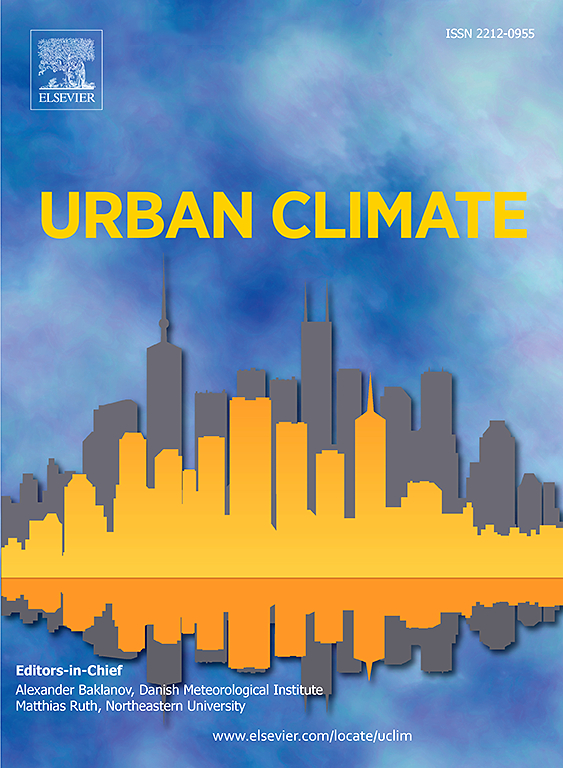绘制赫尔辛基地方气候区内的二氧化碳交通排放图
IF 6
2区 工程技术
Q1 ENVIRONMENTAL SCIENCES
引用次数: 0
摘要
道路交通是大气中二氧化碳(CO2)的主要排放者之一。除了详细的碳排放量计算之外,还需要采用方法来扩大排放量,尤其是在缺乏高质量数据来计算二氧化碳排放量的地区。为了满足这一需求,本研究旨在量化芬兰赫尔辛基地方气候区(LCZ)内与交通相关的二氧化碳排放量,并建立一个基于回归的二氧化碳排放量查询表。为了建立模型,我们将二氧化碳排放数据与建筑表面积、沥青表面积、人口、交通灯和道路类型等变量结合起来使用。建筑低碳区的二氧化碳排放量中值是土地覆被低碳区的 1.8 倍。低碳区框架的原始分类不足以描述交通二氧化碳排放量。描述交通二氧化碳排放最关键的变量是道路类型和沥青面积。然后,我们建立了一个适用于所有低碳区的通用模型,平均可描述 55% 的排放量。在该模型的基础上,我们引入了一个针对特定低碳区的交通二氧化碳排放查询表。该查询表为资源有限的地区提供了一个实用的交通排放估算解决方案。最重要的是,这种方法避免了对交通数据的需求,并将计算资源需求降至最低。本文章由计算机程序翻译,如有差异,请以英文原文为准。
Mapping CO2 traffic emissions within local climate zones in Helsinki
Road traffic is one of the major emitters of carbon dioxide (CO2) to the atmosphere. Besides detailed carbon emission calculations, methods to upscale the emissions are needed, particularly in areas where good-quality data to calculate CO2 emissions are lacking. To support this need, this study aims to quantify traffic-related CO2 emissions within Local Climate Zones (LCZs) in Helsinki, Finland, and build a regression-based look-up table for the CO2 emissions. To build the model, we use CO2 emission data together with the variables, namely building surface area, asphalt surface area, population, traffic light, and road type. The median CO2 emissions from the built LCZs are 1.8 times higher than those from land cover LCZs. The original classification of the LCZ framework is insufficient to describe traffic CO2 emissions. The most critical variables in describing traffic CO2 emissions are road type and asphalt area. We then build a generalized model applicable across LCZs, which can describe on average 55 % of the emissions. Based on the model, we introduce a look-up table for LCZ-specific traffic CO2 emissions. This look-up table offers a practical solution for locations with limited resources to estimate traffic emissions. Crucially, this approach circumvents the need for traffic data, and minimizes computational resource requirements.
求助全文
通过发布文献求助,成功后即可免费获取论文全文。
去求助
来源期刊

Urban Climate
Social Sciences-Urban Studies
CiteScore
9.70
自引率
9.40%
发文量
286
期刊介绍:
Urban Climate serves the scientific and decision making communities with the publication of research on theory, science and applications relevant to understanding urban climatic conditions and change in relation to their geography and to demographic, socioeconomic, institutional, technological and environmental dynamics and global change. Targeted towards both disciplinary and interdisciplinary audiences, this journal publishes original research papers, comprehensive review articles, book reviews, and short communications on topics including, but not limited to, the following:
Urban meteorology and climate[...]
Urban environmental pollution[...]
Adaptation to global change[...]
Urban economic and social issues[...]
Research Approaches[...]
 求助内容:
求助内容: 应助结果提醒方式:
应助结果提醒方式:


